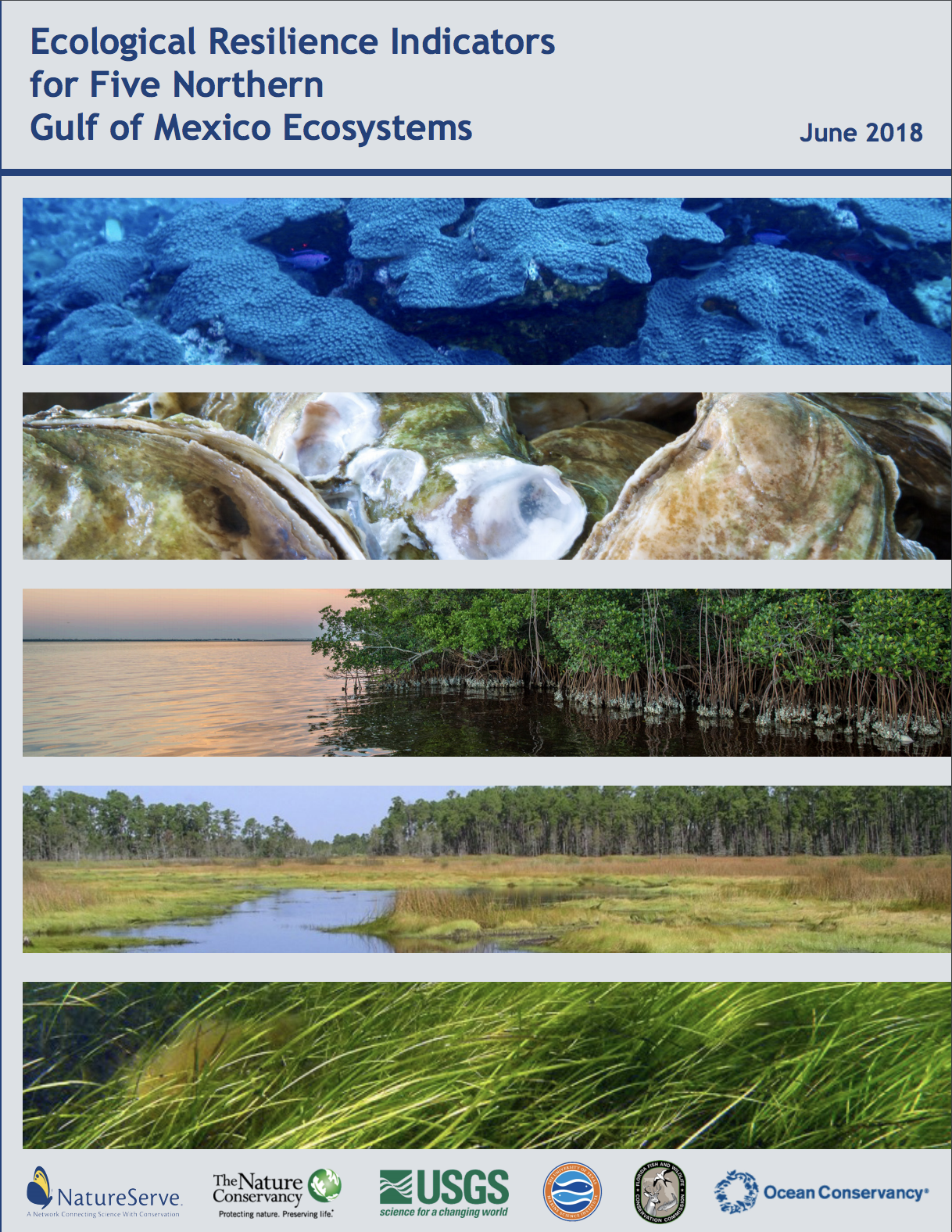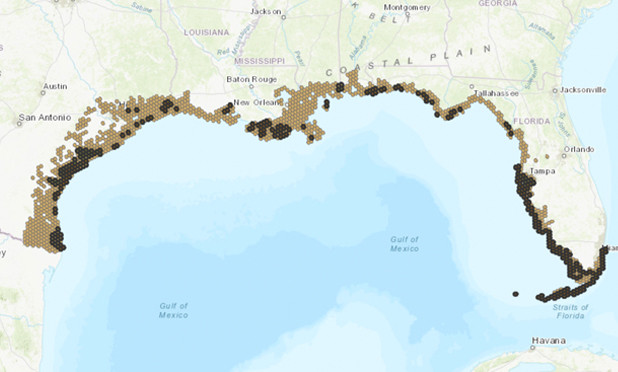 A new report has just been released that delivers a plan to gauge the health of Gulf of Mexico ecosystems. The Northern Gulf of Mexico and all of the habitats within it are big, and it takes big-picture thinking to accurately assess the health of the Gulf.
A new report has just been released that delivers a plan to gauge the health of Gulf of Mexico ecosystems. The Northern Gulf of Mexico and all of the habitats within it are big, and it takes big-picture thinking to accurately assess the health of the Gulf.
The Ecological Resilience Indicators for Five Northern Gulf of Mexico Ecosystems report provides conceptual models and indicators to help document how healthy the ecosystems of the Northern Gulf are and how well they are providing services (i.e., fisheries production, CO2 absorption) to humans. The report specifically developed models and indicators for several of the important ecosystems in the Northern Gulf: salt marsh, mangrove, seagrass, oyster and coral reefs. “The indicators we developed for this project can be used in a similar way as doctors use cholesterol to measure heart health,” said lead author Kathy Goodin, Director of the Marine Program at NatureServe.
The report also provides a map of the existing monitoring programs that are collecting data on these ecosystems. This report is meant to inform marine resource management, restoration planning and evaluation, damage assessment and recovery, and ecosystem health assessment.
The report was developed by NatureServe, in partnership with USGS Wetland and Aquatic Research Center, The Nature Conservancy, The University of Texas Marine Science Institute, Florida Fish and Wildlife Conservation Commission, and the Ocean Conservancy and funded by the NOAA RESTORE Science Program. The project report and list of indicators can be downloaded at http://www.natureserve.org/conservation-tools/projects/ecological-resilience-indicators-five-northern-gulf-mexico-ecosystems. The spatial analysis is available at http://maps.coastalresilience.org/gulfmex/









